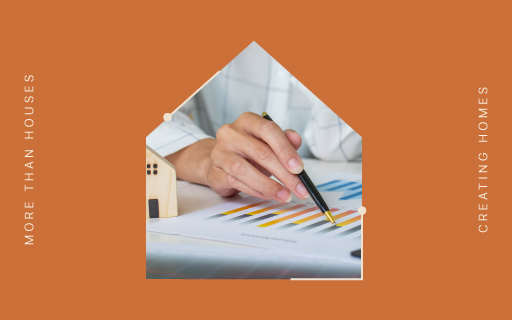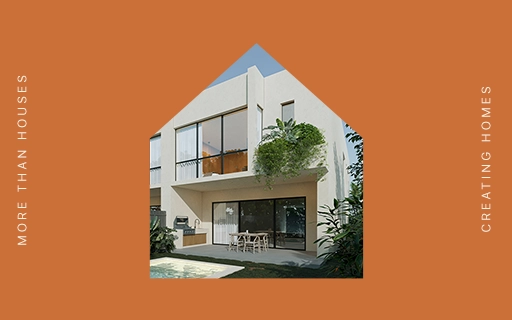Investing in real estate isn’t just about buying low and selling high (no matter how much we want it, things are not that simple). People who have experience investing in property and are connoisseurs of the procedure that is attached to it, understand the importance of analyzing the true profitability of a project before committing time and capital. And this is not a decision you make based on a gut feeling.
Of course, every investor in real estate may have a particular set of parameters for gauging the viability of a real estate project. One of the most insightful yet overlooked in comparison to other metrics is the Return on Cost (ROC). Unlike the more familiar Return on Investment (ROI), which evaluates profit relative to total returns, ROC zeroes in on the projected yield once a property reaches stabilization.
In this article, we will explain the Return of Cost, what it consists of, how to calculate it and how important it is for helping any investor (whether it is a seasoned or an inexperienced one) to make smarter, more strategic real estate decisions.
What Is Return on Cost in Real Estate?
Return on Cost –also called “stabilized yield” is a metric used primarily in development and value-add real estate projects. It provides a snapshot of how much income a property will generate relative to its totals (full cost of acquiring, building, or renovating it). Essentially, ROC is a forward-looking metric, answering the question:
“What will my annual yield be once the property I buy is completed and fully leased at market rates?”
Put simply, the Return on Cost evaluates whether the property you’re interested in has the potential to generate more cash flow than the acquisition of a stabilized asset. Unlike ROI, which can vary depending on financing structure or holding period, ROC isolates operating performance from external financial factors. This means that this particular metric can particularly be relevant in the early stages of project analysis.
Key concepts: We’ve mentioned the terms development and value-add real estate projects, but we haven’t explained them yet. Put simply as they sound, in the value-add project, the real estate investor improves an existing property, which consequently causes the augmentation of its rental rate. On the other hand, a development project implies a long-term investment in which the property is built from scratch (“the ground up”).
What is the formula for calculating ROC on a property?
The formula for calculating Return on Cost is the Stabilized Net Operating Income (NOI) of the property, divided by the total project cost (which includes any cost incurred during the property purchase and development, meaning it considers the costs of construction, renovations, and capital expenditures (Capex).
In that sense, the formula is as follows:
Return on Cost (ROC) = Stabilized Net Operating Income (NOI) ÷ Total Project Cost
Where:
- Stabilized Net Operating Income (NOI) = Gross income at market lease rates – Operating expenses (before financing costs and taxes)
- Total Project Cost = Purchase price + Development/renovation costs + CapEx
Why This Metric Matters
Investors and developers use ROC as a benchmark for whether a project is worth pursuing. If your return on cost is significantly higher than the market cap rate for similar stabilized assets, the project may present a strong value-add opportunity.
For example:
- Market cap rate for stabilized multifamily buildings: 5%
- Your projected ROC: 7.5%
This “spread” between ROC and the market cap rate (in this case, 2.5%) suggests a profitable margin. In institutional investing, a 100–200 basis point spread is often considered a minimum threshold to justify the risk and effort of development or renovation.
It will be easier to explain using a case with real numbers, so let’s walk through a detailed example of calculating ROC:
Calculation Example of Return on Cost (Step-by-Step)
Here’s a simulated example where we’ll be using real numbers to calculate our Return on Cost.
Scenario: Value-Add Apartment Building
- Purchase Price: $1,000,000
- Renovation & CapEx: $500,000
- Total Project Cost: $1,500,000
You expect to:
- Lease all units at market rent
- Collect $300,000 in effective gross income annually
- Spend $75,000 in operating expenses annually
Step 1: Calculate Stabilized Net Operating Income (NOI)
NOI = $300,000 (Income) – $75,000 (Expenses) = $225,000
Step 2: Divide that previous result by the total project cost
ROC = $225,000 ÷ $2,500,000 = 15%
This ROC tells you the project will yield a 15% annual return based on costs once it’s stabilized: an attractive number if market cap rates are lower. In this sense, ROC calculations are more insightful when compared to the market capitalization rate for similar stabilized assets, so in order to have a broader panorama, you’ll need to calculate the Cap Rate, where:
Cap Rate = NOI ÷ Market Value
If your ROC > Cap Rate, you’ve created value. This is often called the development spread.

Return on Cost vs. Return on Investment (ROI)
You’ve probably heard about Return on Investment as a metric broadly used in property investment. You might be wondering which one is best to use (ROI vs ROC). The truth is that, while ROC and ROI are related, they serve different purposes in investment analysis. ROI’s focus confronts the total profit and the investment made and it’s used for analyzing the overall profitability over time, while, as you’ve read so far, ROC confronts the income yield with the total cost of a project for analyzing its viability at stabilization.
ROI Formula (Cost Method)
ROI = (Gain – Cost) ÷ Cost
Example:
- Purchase + renovation: $400,000
- Expected sale: $500,000
- Gain: $100,000
- ROI = $100,000 ÷ $600,000 = 25%
ROI is broader and includes appreciation or resale, but it can be less helpful during the planning phase of a project.
When to use ROC as a metric in Real Estate Investment
As we’ve stated before, there are various metrics to be used while analyzing the viability of a property investment, precisely because they serve different purposes. As a metric, ROC is ideal for the planning phase of a project, making it best for development/renovation projects, although it has its limitations, since it doesn’t account for time value.
On the other hand, ROI and Cap Rate, the other two metrics mentioned in this article, work best for other intentions, and have their own limitations. The first one, ROI, is ideal for evaluating total return; however, it can be distorted by leverage. Finally, Cap Rate is best for comparing stabilized assets, but it ignores total investments costs.
A good methodology should be using ROC in conjunction with these metrics to offer a complete investment picture over your decision making. Just remember these tips of how ROC informs your analysis:
- If your projected ROC is only slightly above the market cap rate, the risk-adjusted return may not justify the effort. This metric helps you say no early.
- Is budget allocation an issue that concerns you? If you don’t know if you should spend more on renovations or accept lower rent targets, ROC shows how additional costs affect yield.
- And, finally, a high ROC can signal strong exit potential if market cap rates hold steady. Investors might opt to refinance or sell shortly after stabilization.
What Is a Good ROC in Real Estate?
There’s no universal “good” ROC — it depends on the asset class, location, and market cap rates.
However, here are some benchmarks:
- Multifamily Value-Add Projects: 7–9%
- Ground-Up Developments: 6.5–8.5%
- Commercial Projects: 8–10% (depending on market and tenant strength)
The key is to compare the Return of Cost to the Cap Rate for stabilized properties in the same area. A 150–200 basis point spread (e.g., 8% Return of Cost vs. 6% Cap Rate) is generally considered strong.
As you see, return on Cost is a powerful tool for real estate investors. It strips out financing noise and focuses purely on project performance, offering clarity on whether the costs are aligned with the expected income. Just remember: the goal isn’t just to build or buy: it’s to build or buy wisely. Using this metric as part of your analysis, you’ll be able to make more confident decisions that balance risk, reward, and return.




